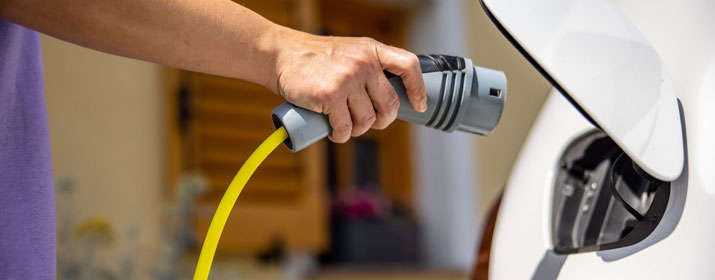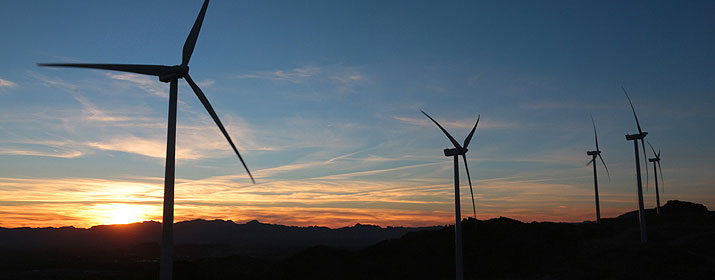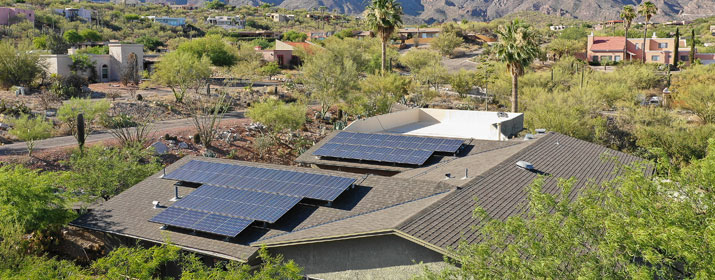
While electric vehicle shoppers often focus on how they drive, it’s also worth considering how they’ll charge.
Installing a home charger makes owning EVs more affordable and convenient. You won’t need to rely on public chargers and can charge your vehicle overnight, when electric rates are lower on TEP’s special pricing plans for EV drivers.
But chargers come in different types that charge at different speeds, and some may require upgrades to your home’s electrical system. Choosing the right charger is the first step to buying the best EV for your lifestyle.
3 Types of Charging
Chargers are classified by how much power they provide, which in turn determines how quickly they’ll charge your car. Depending on the type of charger and the battery’s current charge, the amount of time it takes to fully charge an EV varies from a half hour or less to 20 hours or more.
- Level 1 charging relies on standard, 120-volt (V) household current. All plug-in EVs come with a cable that connects to the vehicle’s on-board charger and a standard household outlet. One drawback to using a 120V outlet is the slow charging time. Generally, outlet charging provides up to 5 miles of range for each hour of charging. For that reason, level 1 charging is best suited for overnight use.
- Level 2 chargers use either a 240V plug that’s found in most newer homes or a 208V plug, which is common in commercial properties. These chargers can fully charge an electric car battery in as little as 2 hours, making them a good choice for both homeowners and businesses.
- Level 3 or direct-current (DC) fast chargers are designed primarily for commercial use in public locations along high traffic areas and major transportation corridors. These DC rapid chargers use a 480V connection to provide a range of 120-400 miles for each hour of charging.
While most EV owners will choose a Level 2 charger for the convenience of faster charging, it’s helpful to understand the different charging options. Just keep in mind that mileage may vary per charge depending on the charger, weather, driving habits and other variables that affect range.
Is Your Home EV Ready?
Before buying an EV, you’ll need to determine if your home’s electrical system can support a Level 2 charger or if upgrades are required.
“Adding a level 2 charger may require upgrades if your electrical panel is not big enough or if every breaker is already wired,” said Camila Martins-Bekat, Senior Market Development Representative for Tucson Electric Power. “A licensed electrician can assist with these upgrades.”
Last June, the City of Tucson amended the city’s building code to require all new construction for one and two-family dwellings to be EV-ready with a 40 amp circuit and a receptacle near a parking space.
But some forward-thinking homebuilders both inside and outside the city limits – such as A.F. Sterling HomeBuilders, Pepper Viner and Richmond American Homes – are already pre-wiring new homes as an amenity for homebuyers.
“By having our new A.F. Sterling Homes EV ready, we are offering additional value to our homebuyers and providing an easier transition to an electric vehicle by making it simpler and more affordable,” said Randy Agron, Vice President of A. F. Sterling.
Charger and Installation Costs
, Currently, there is no one standard charging plug for all EVs. The type and model of charger you’ll need will depend on the type of vehicle you choose. or. “Be aware of what plug you will have on your EV and make sure it fits the charger you select for your home,” advised Martins-Bekat.
Level 2 charger costs vary widely, ranging from as little as a few hundred dollars to thousands of dollars depending on the model.
“Nowadays, chargers can be found online at Amazon, Costco and Home Depot for a few hundred dollars, and the TEP Marketplace also offers options as well,” said Martins-Bekat.
As more EV models come to market and prices decrease, some families may have multiple EVs. You don’t need a charger for every EV. With longer range, the vast majority of people will only need to charge their EV a few times a week. “Families with two EVs can easily take turns charging their EVs.”
Besides the cost of the charger, homeowners need to consider the cost of professional installation and any electrician’s fees if upgrades are required to the home.
Benefits of EV Ownership
EVs drive powerful economic and environmental benefits for our community. In most cases, they also cost significantly less to fuel than conventional vehicles on a per-mile basis. Repair and maintenance costs can also be lower, since EVs have fewer moving parts.
TEP is playing a key role in supporting EV adoption in the commercial and residential markets by helping make EV ownership more affordable. Not only do we offer rebates for the purchase of qualified chargers for home and business use, but we also offer pricing plans that provide lower rates for charging EVs overnight, when demand for power is lower.
“For most of us, buying a home and vehicles are your biggest purchases,” said Martins-Bekat. “Buying an EV is an investment that can reduce your vehicle operating and maintenance costs while helping to reduce carbon emissions. With some upfront homework and planning, you can choose the right EV and charger for your home.”






